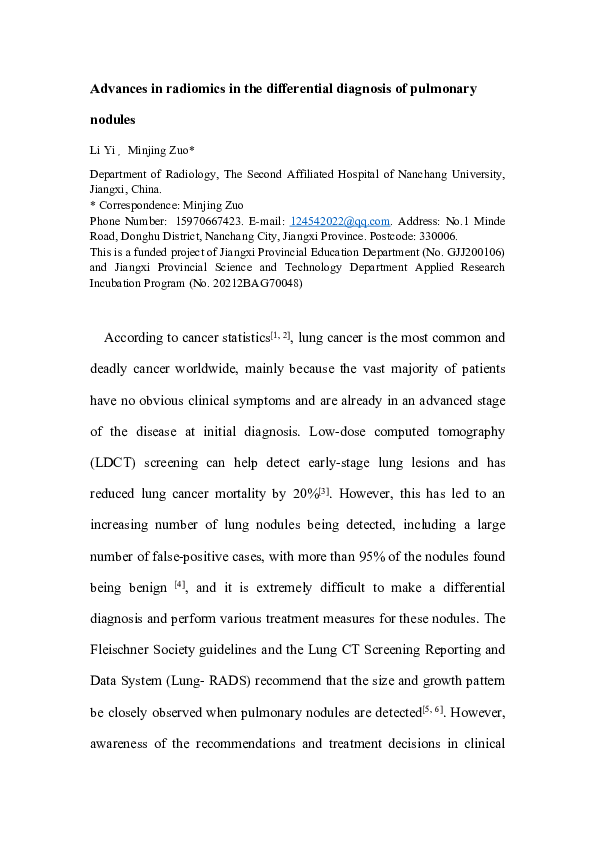Advances in radiomics in the differential diagnosis of pulmonary nodules
Preprint |
10.55415/deep-2022-0043.v1
This is not the most recent version. There is anewer
versionof this content available.
Abstract
According to cancer statistics[1, 2], lung cancer is the most common and deadly cancer worldwide, mainly because the vast majority of patients have no obvious clinical symptoms and are already in an advanced stage of the disease at initial diagnosis. Low-dose computed tomography (LDCT) screening can help detect early-stage lung lesions and has reduced lung cancer mortality by 20%[3]. However, this has led to an increasing number of lung nodules being detected, including a large number of false-positive cases, with more than 95% of the nodules found being benign [4], and it is extremely difficult to make a differential diagnosis and perform various treatment measures for these nodules. The Fleischner Society guidelines and the Lung CT Screening Reporting and Data System (Lung- RADS) recommend that the size and growth pattern be closely observed when pulmonary nodules are detected[5, 6]. However, awareness of the recommendations and treatment decisions in clinical practice vary between radiologists and pulmonologists [7], and intensive long-term follow-up CT may increase radiation dose to patients and cause psychological problems for patients. The spread of lung cancer screening and the development of treatment modalities urgently require good noninvasive biomarkers that can accurately diagnose, classify, and risk stratify screening and incidentally detected lung nodules. This is made possible by the development of imaging histology as a new technology that identifies, extracts, quantifies, and analyzes imaging features from imaging images to better characterize the phenotype of pulmonary nodules than is possible with the naked eye. The focus of this article is an overview of research advances in imaging histology in the differential diagnosis of pulmonary nodules.


